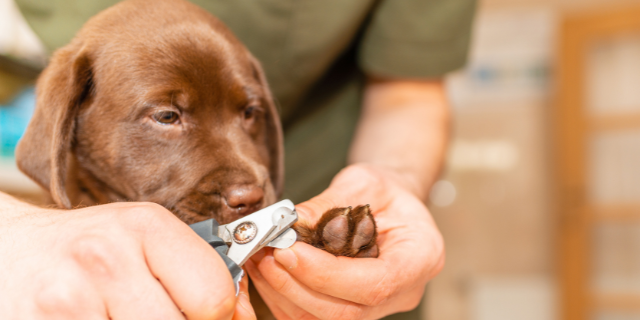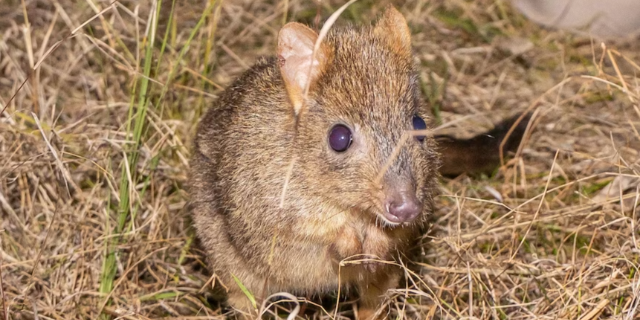| |
|
|
| |
Mira Mar Veterinary Hospital
|
|
| |
|
|
| |
|
|
| |
|
|
|
|

|
| |
March Newsletter
|
|
| |
|
|
| |
Welcome to Autumn! We are hopeful that the worst of the hot weather is behind us, and that your pets coped on those few sweltering days.
This month's newsletter is all about behaviour! Our pets sometimes don't always behave the way we would like. We hope you get some tips and insights from the newsletter articles, and this helps everyone put their best foot forward!
Congratulations are in order this month to our very own 'superfish', Nurse Caitlin, who competed in the 2024 Country Pennants Swimming Championships in Kalgoorlie on the long weekend. She came home with a swag of medals, and the Albany Swimming Club won the overall B Grade Country Pennant and the B Grade Relay Country Pennant! Well done to Caity and the Albany Swimming Club squad! |
|
|
|

|
| |
February Puppy Preschool Graduates
|
|
| |
|
|
| |
Well it's been a minute since we've graduated a Puppy Preschool class! After a well deserved break in January for Nurse Jodie, it was time to kick off our classes for another year. And honestly, could we have wished for a more cute and pleasant bunch of pups?
Congratulations to our gorgeous graduates: Archie, Bobby, Lola, Kiki, Mae, Roxy and Shelby.
We hope they all go on to a long life full of good social skills and behaviour thanks to the fun they had at Puppy Preschool!
If you think your puppy would like to come along to one of our upcoming classes, please give the clinic a call on 98415422. |
|
| |
|
|
| |
Call Now
|
|
|
|

|
| |
How to reduce bothersome barking?
|
|
| |
|
|
| |
Whilst barking is a natural means of communication for dogs, too much yappy means no one's happy (sorry, we couldn't help ourselves!)
Here are our top tips to help reduce bothersome barking:
Work out why
Before we can start to work on your pet's excessive barking, it's important to pinpoint what triggers it.
Dogs may bark in excitement or as a guarding response to obvious visual or auditory stimuli (such as people or pets walking by your property, unfamiliar sounds, or possums in the trees at night). Dogs may also bark excessively due to other behavioural issues, such as anxiety or boredom.
Ensure your dog is exercising
Ensuring your dog is physically tired out and kept mentally occupied helps reduce boredom- or frustration-related barking and is also good for their general health.
We'd recommend daily walks/runs, and other “brain-game” activities such as treat-hunts, long-lasting chews, puzzle toys, Lick mats and snuffle mats.
Encourage calm
If your dog is barking in response to certain visual or auditory stimuli, blocking their access to these can help. Visual stimuli can be blocked with screening on fences or films on windows (which still allow light through), whilst sounds can be masked with soft-moderate background TV or radio noise.
It's also a great idea to teach your dog to be calm and quiet by consistently rewarding them for being so. This can be done by training your pet to go to a specific place (such as a bed or rug) and rewarding them when they are calm and not barking.
Don't punish the behaviour
Unfortunately, quick fixes like citronella collars or shouting at or otherwise punishing pets usually don't work in the long term and can worsen anxiety-related issues.
For recommendations on anti-anxiety therapy and positive method behaviour training, consult our behaviourally brainy-team! |
|
|
|

|
| |
The dreaded nail trim
|
|
| |
|
|
| |
Unfortunately, nail trim phobias in pets are reasonably common. They can result from a negative experience (such as a nail accidentally being cut too short previously) or may develop in naturally anxious pets or puppies who didn't receive adequate positive socialisation or handling experiences.
How can you help your pet that has nail trim phobia?
The most crucial first step is to avoid forcing your pet into a nail trim by overpowering them. Although this approach might seem effective initially, it often leads to increased fear and anxiety in your pet over time, making the problem worse.
If your pet urgently needs a nail trim, it’s usually best to book them for one or two nail trim procedures under sedation in the veterinary clinic to get their paws in a more comfortable state whilst starting long-term retraining therapies.
1. Mild cases
Milder cases of nail trim phobia can often be improved with a properly performed behaviour modification program. This will involve you retraining your pet’s brain through desensitisation and counterconditioning techniques so that they learn that nail clips are OK.
It's essential to take things slowly with short, positive daily training sessions over weeks to months so that your pet isn’t pushed too hard too soon. Here is a video (and accompanying description) demonstrating desensitisation and counterconditioning. Please remember that any pet can bite if they feel sufficiently threatened, so take care to avoid putting yourself or others at risk of a bite injury.
If you are feeling unsure about how to safely work with your pet, please consult us for recommendations on positive method trainers.
2. Moderate to severe cases
In more severe cases, we may need to prescribe short- or long-term calming medications for your pet, so that they can relax enough to respond well to behavioural modification.
We will also discuss potential alternative options that may help, such as using a Dremel or training your pet to use a scratch pad voluntarily.
For more behavioural assistance, consult our mental-health magnificent team! |
|
|
|

|
| |
Tales of tail chasing
|
|
| |
|
|
| |
If you’ve watched any funny animal video compilations, you may have giggled once or twice at footage of dogs chasing their own tails in a ridiculous fashion. But is this behaviour a harmless canine quirk, or does it represent a problem?
What is tail chasing?
Tail chasing is a behaviour mostly seen in dogs, involving the pet spinning in circles in apparent pursuit of their tail (which they may or may not actually catch and bite).
Why does a dog tail chase?
Some dogs chase their tail occasionally in play or excitement, particularly if they get a positive response from their owner (such as laughter) by doing so. This is considered reasonably normal, provided it occurs infrequently, and the pet can be distracted from the behaviour.
However, repetitive tail chasing can be a symptom of an underlying problem, such as:
- A behavioural issue, e.g. anxiety or an obsessive-compulsive disorder (OCD)
- Pain or discomfort around the pet’s back end, e.g. spinal pain, bottom or tail irritation, hip pain, abdominal pain, or skin irritation
In dogs with obsessive-compulsive disorders, the tail chasing tends to increase in severity and frequency over time, becoming increasingly difficult to distract from. Other symptoms, such as aggression, fear, or seizures, may occasionally accompany it.
What should I do if my pet tail chases?
Regardless of the underlying cause, early intervention is always best. If your dog is tail chasing frequently, we recommend a prompt check-up so we can examine them for any potential causes of back-end pain or discomfort. We may also suggest imaging (such as X-rays) to assess their joint health.
If your dog’s tail chasing appears to be OCD or anxiety-related, we can arrange a behavioural treatment plan for them, which may include:
- Avoiding any triggers for the tail-chasing behaviour
- Increased physical activity and mental stimulation
- Encouraging and rewarding calm behaviour, whilst ignoring tail chasing
- Medication to help calm your pet and support their retraining
- Treatment of any tail wounds
For more help with your pet’s behaviour, consult our experienced team. |
|
|
|

|
| |
How can you help your anxious pet?
|
|
| |
|
|
| |
Anxiety is being increasingly recognised in pets, with up to 20% of dogs believed to have an anxiety problem. Anxiety may be situation-specific (e.g. triggered by thunderstorms or unfamiliar visitors) or more generalised.
If you think your pet might be affected by anxiety, try not to worry - there's a lot that you can do to help them! Read on for tips on how you can support your pet and how we can help.
1. Learn how to recognise symptoms of stress or anxiety in your pet
Being able to recognise symptoms of stress or anxiety in your pet means you can start taking note of situations that are likely to trigger them.
Anxiety in pets can manifest as a fight, flight or freeze response. Click the links to identify some of these body language signals in dogs and cats.
2. Minimise stress
It's important to offer your pet a safe zone at home, which includes a door so that they can feel enclosed and protected even if guests are around. The safe zone can be a crate or room with dim lighting, a comfortable bed, and soft background noise to block out external sounds. Create positive associations with the space by regularly offering your pet special treats or toys there.
3. Support your pet's general health
It's important to give your pet a regular healthy outlet for their physical energy with breed-appropriate daily exercise. Try to follow this up with relaxing “brain games” - this may involve using Lick-Mats, puzzle toys, scented treat hunts, or chew treats that keep your pet occupied and calm.
4. Seek veterinary assistance
If your pet's anxiety is regularly hurting their quality of life (or yours!), it is recommended that you seek help from our experienced vets. This may involve the use of short- or long-term anti-anxiety supplements or medications, and a behavioural modification plan to build your pet's confidence.
With the right treatment plan, we'll have everyone living their best life in no time! |
|
|
|

|
| |
How to give your ninja cat medicine without the fuss
|
|
| |
|
|
| |
We get it! Not every cat is cooperative with administering necessary medications, and they can be remarkably ninja-like and adept at using their natural defences. So here are our top tips for low-stress tabletting of tricky cats.
1. Bribes
A spoonful of sugar sure does help the medicine go down, and we fully support using cat-friendly treats to assist in their tabletting experience!
Here are some options to try:
- Butter: many cats love the taste of butter, so coating your cat's tablet or capsule in a little softened butter can help it to slide more easily down their throat, with a pleasant aftertaste
- Feline treats: some owners find it best to quickly administer their cat's medicine and then immediately offer their cat some compensation in the form of their favourite snack
- Lick-treats: liquid treat pouches can be great for hiding small tablets in. If your cat is food-motivated enough, they may just lick up a tablet hidden near the surface of the treat
2. Restraint
If your cat is an unwilling participant for their medical experience, we'd recommend gentle restraint in the form of a calming blanket wrap. Here's how. Don't forget to reward them with a tasty treat after. |
|
|
|
| |
|
|
| |
3. Correct technique
To pop pills down your cat's throat, carefully hold them around their top jaw/cheekbones and lift their nose up to the ceiling. This will allow you to open their lower jaw with your middle finger, and then drop tablets right to the back of their throat using your index finger and thumb (or a finger-saving “Pill popper” device).
It's a good idea to follow tablet administration with a trickle of water into the side of your cat's closed mouth (using a syringe), to help them to swallow the medication. |
|
| |
|
|
|
|
| |
4. Enlisting help
If you're still struggling, please ask us our friendly team for further assistance. |
|
|
|

|
| |
Animal News In Brief
|
|
| |
|
|
| |
Italian province enforces DNA testing for dogs to combat street mess
In a bold move to address the issue of dog fouling, Bolzano, a northern Italian province, has mandated DNA testing for all dogs. Owners are required to have their pets tested, with the results logged into a database to help identify and fine the owners of dogs that leave messes on the streets. Despite the initiative targeting the estimated 45,000 dogs in the region, compliance has been low, with only 5,000 tests completed. “It is easier said than done,” Madeleine Rohrer, from the local Greens party, told the newspaper Il Giornale. Critics argue the measure is burdensome for responsible pet owners and question its feasibility, especially regarding strays and tourists' pets. Yet, officials defend the scheme, emphasising its role in broader public and pet safety measures.
Click here to read the full story on The Guardian.
Cat collar proposal surprises pet lover
Sage Horn expected a regular Valentine's Day evening until she noticed her cat, Piper, was missing. After searching around with her partner, Jakob Mattern, they found Piper wearing an unusual collar. Jakob, who wasn't much of a cat person before but now loves them just as Sage does, acted a bit oddly, making excuses about why Piper was shut away. Then, Sage saw the collar message, it was a complete surprise! “I noticed it said, ‘Will you marry me,’ and I turned around, and my boyfriend was down on his knee smiling with the ring in the box and said, ‘Babes, I want to spend the rest of my life with you and the kitties,’” Horn said. This unique proposal, involving Piper at the moment, was both unexpected and heartwarming. Sage, caught off guard but overjoyed, said yes to a future filled with love and, of course, their cats.
Click here to see the full proposal story at The Dodo.
Generational spending on pets: Millennials lead the pack
Recent research reveals Australian pet owners' spending habits, highlighting a generational divide in how much time and money is devoted to pets. Millennials top the charts, spending the most ($357) on their pets monthly, followed by Gen X ($282), Gen Z ($257) and Baby Boomers ($173). The study, conducted by CommBank, also notes Millennials and Gen Z are more inclined to photograph their pets as much as their family members, reflecting a nation deeply in love with its furry companions. With pets considered full-fledged family members, it's clear Australians' passion for their pets spans across all ages, with a particular financial and emotional investment noted among the younger generations.
Click here to read more about pet spending at 96five Family Radio. |
|
|
|

|
| |
Brush-tailed bettongs thrive amid Pilliga's challenges
|
|
| |
|
|
| |
In a heartening conservation success, the brush-tailed bettongs' numbers in the Pilliga State Forest have more than doubled, thanks to the Australian Wildlife Conservancy's (AWC) reintroduction efforts. Starting with 55 individuals in September 2022, the population has impressively grown, overcoming initial environmental challenges.
Reflecting on the project's early days, Dr Vicki Stokes, a senior wildlife ecologist at the AWC, shared, "Within two to three months of [the animals] being released, we had two floods in the Pilliga. They had to survive some pretty extreme conditions… we did lose a couple of individuals due to the flooding." Despite these setbacks, including a close call with bushfires, the bettongs have flourished, symbolising resilience.
The expansion of their habitat from 680 to 5,800 hectares is a testament to their thriving numbers. Dr Stokes adds, "Every time we trap them, we've got very healthy males and females. We usually have 70 percent or more of our females that have pouched young," highlighting the success of the conservation efforts.
Looking forward, Dr Stokes emphasised the importance of addressing threats from invasive species, stating, "For any regionally extinct species to survive beyond the fence, it would be crucial to get fox and cat control effectively happening." This underscores the ongoing challenges in conservation work and the critical steps needed to ensure the bettongs' continued success in their natural habitat.
Click here to read the ABC's full story.
Photo credit: Australian Wildlife Conservancy |
|
|
|
| |
This email contains comments of a general nature only and is not intended to be a substitute for professional veterinary advice. It should not be relied on as the basis for whether you do or don't do anything.
All content © PetPack 2024 |
|
|
|
[Footer]
|